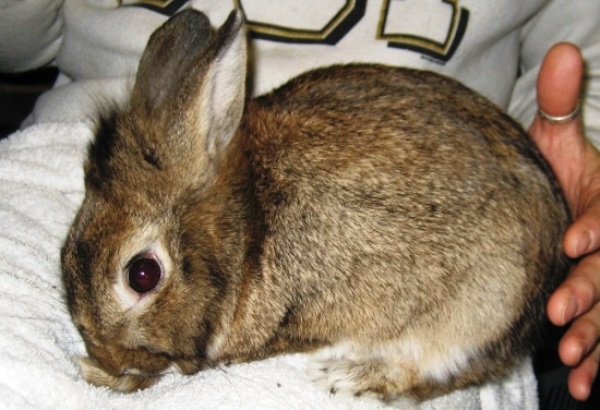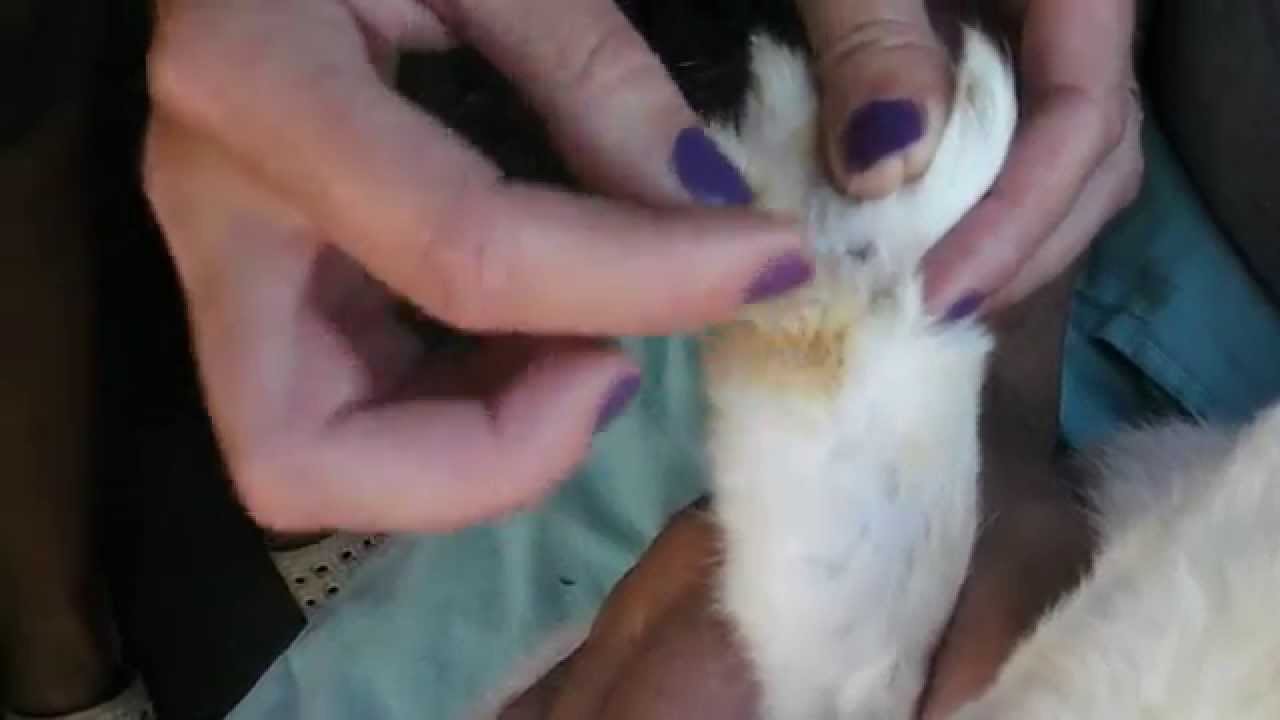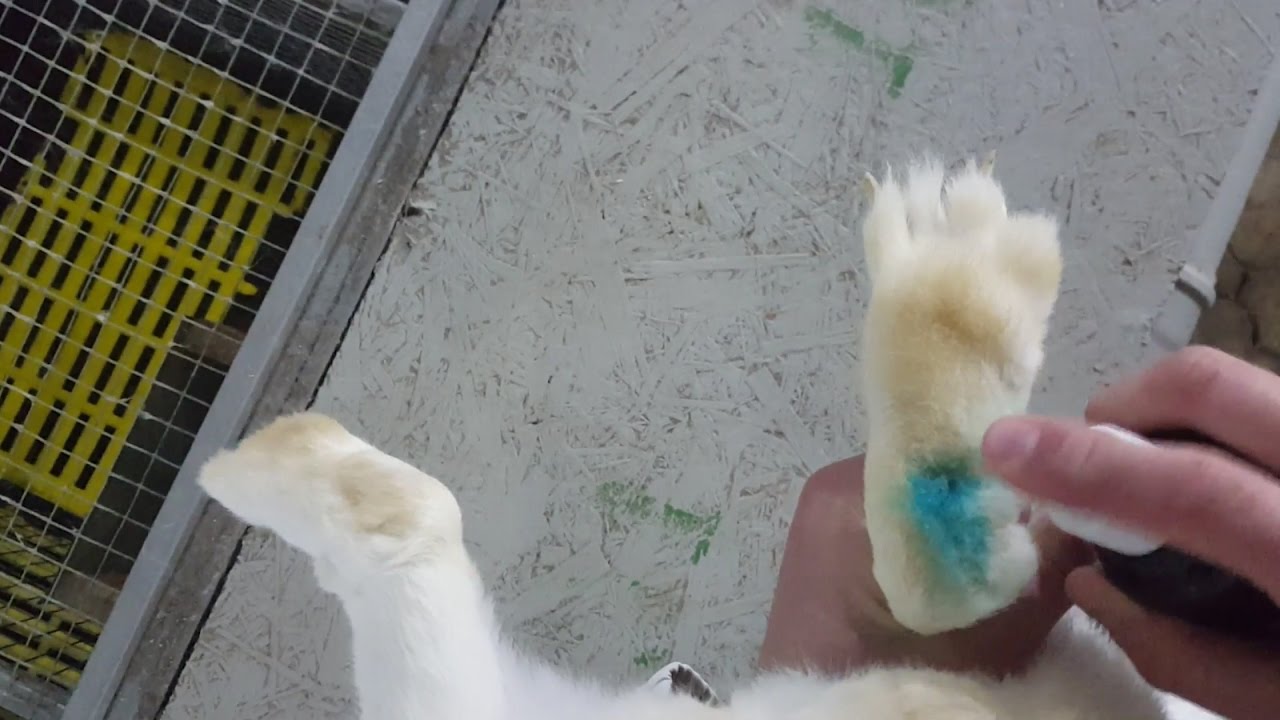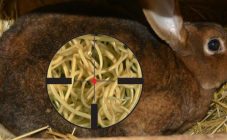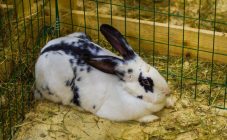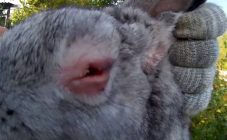Content:
Pododermatitis is a dangerous ailment that, at the last stages of its development, leads to the death of the animal. This pathology, today, is one of the most common. Most of all, young rabbits, 3-4 months of age, are prone to the disease. Obese individuals are also susceptible to disease. Pododermatitis in rabbits: treatment is the topic of this article.
Pododermatitis in rabbits: symptoms, types
Pododermatitis is not transmitted from a sick animal to a healthy one, since it does not belong to infectious diseases. At the initial stage of the development of the disease, hematomas, calluses and cracks can be seen on the pads of rabbit paws, in parallel with this, pronounced peeling of the skin is observed. As the pathology develops, bleeding ulcers and wounds form on the feet, through which various infections enter the bloodstream. Perhaps the most common is staphylococcal bacillus. The animal loses its appetite, it usually lies down constantly due to painful sensations during movement.
Fungi can also enter the affected areas of the legs. In this case, the rabbit's fur begins to fall out, the skin becomes even more dry and flaky.
The most pronounced characteristic signs of the disease:
- Continuous raising of the paws, but the diagnosis can be confirmed only after a careful examination of the paws;
- Decreased activity. The animal, as a rule, lies in one place, while it stretches its paws in a horizontal position;
- Breakdown or stress. Rabbits are too restless, lactating rabbits have poor lactation;
- Complete or partial lack of appetite;
- Hair falls out on the legs. Also, during a visual examination, you can find corns, injuries, cracks, and blood fluid.
Types and stages of their development
Pododermatitis is divided into several types. To quickly get rid of the disease, you must correctly install it. The disease can be aseptic and purulent, which, in turn, is divided into deep and superficial. Pathology proceeds in several stages:
- Superficial lesions can be easily treated at home with the right method;
- The infected surface is accompanied by the development of purulent pododermatitis. At home, you can cure the disease if you start the procedures in a timely manner and choose the right medicines;
- Penetration into living tissues. With the onset of this stage, surgical intervention is often necessary, as well as long and intensive drug treatment. If cured, a relapse is possible;
- Deep penetration is accompanied by damage to bones and all tendons. Predictions in this case are difficult to give, it all depends on the animal's body, its immunity.
Causes of damage to the plantar part of the animal's foot
The reasons for the development of pododermatitis in rabbits can be the following factors:
- Constant stress and nervous tension;
- An infection that occurs inside the body;
- Untimely or improper treatment of other diseases;
- Reducing the body's protective barrier, malfunctioning of the immune system;
- Hereditary predisposition, for example, decorative royal rabbits have an insufficient amount of wool on the pads, which negatively affects their condition;
- Excessively long nails, which are the cause of improper placement of the paws;
- Often the cause of the development of pododermatitis is high humidity, as well as high temperatures. The room must be equipped with good ventilation. The room where the pet lives should be well lit, warm and dry;
- Pathology can develop due to obesity. Rabbits should not be overweight. The cages where pets live should be spacious so that they can move freely there.
Corns in rabbits: treatment
A successful outcome depends on the promptness, the advanced form of the disease often ends in death. If you suspect that something is bothering your pet, you should immediately show it to your veterinarian.
If it is not possible to show the animal to the veterinarian, it is necessary to treat the resulting wounds with a disinfectant and antiseptic solution. It is recommended to use ordinary iodine or hydrogen peroxide (3%), they can be purchased at any pharmacy. Wounds should be treated daily until the wounds are completely healed.
If the inflammation is severe, intramuscular administration of an antibacterial drug (antibiotic) is required. After that, applications with Vishnevsky ointment or Levomekol are applied to the wounds. It is also worth paying attention to the effective veterinary drug - Allu-Glyn-Spray, when applied, the composition forms a protective film. The bandage is changed daily, it must be applied according to the principle of socks.
To achieve the desired result, it is better to resort to complex treatment, therefore, decoctions of medicinal herbs can be used, they should be regularly washed with wounds. For external treatment, it is recommended to use calendula, and to introduce nettle, strawberry and blackberry leaves, shepherd's purse and plantain into the diet, they have pronounced hemostatic properties.
If a rabbit is affected by pododermatitis, the hygiene of the rabbit should be monitored more carefully, in no case should the cage be contaminated. A rubber mat should be laid at the bottom of the "house".
To prevent the development of the disease, it is necessary to carefully monitor the coating on which the pet moves, the fillers should not be hard (they injure the surface of the legs), and the cover must be clean.
Pododermatitis is a dangerous disease that will not tolerate neglect. If the owner does not start competent treatment of the disease in a timely manner, the pet, unfortunately, cannot be saved.
